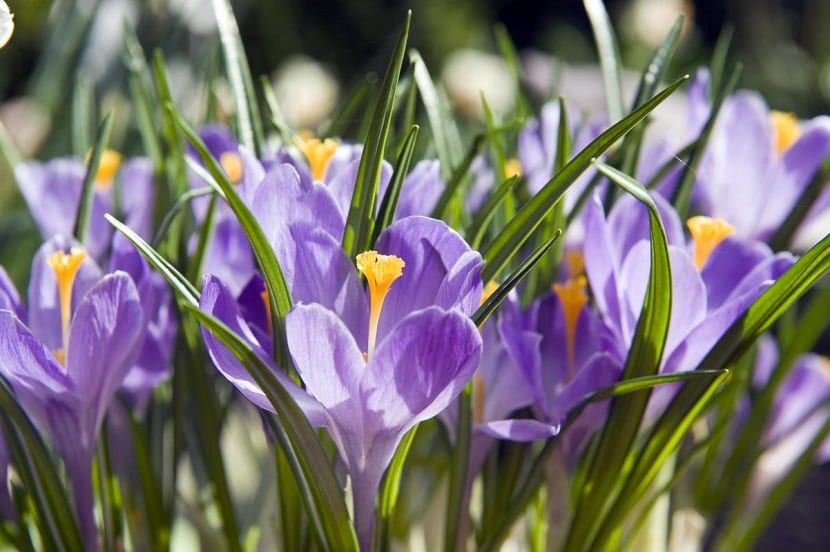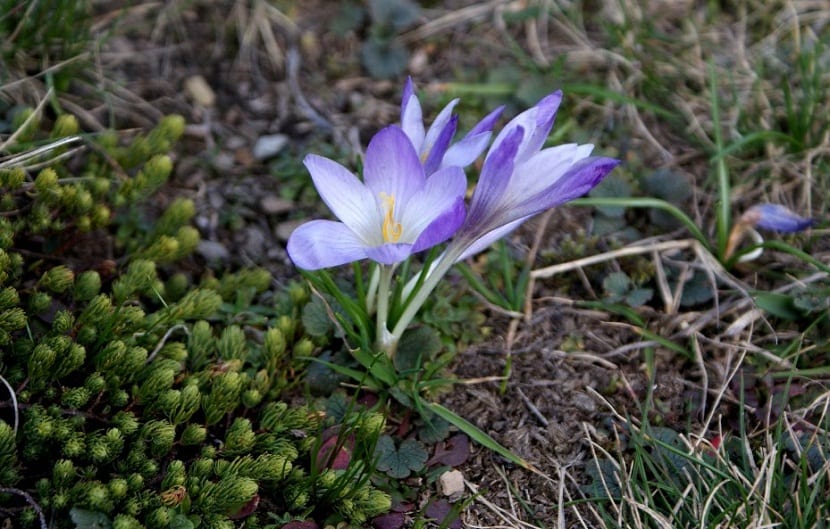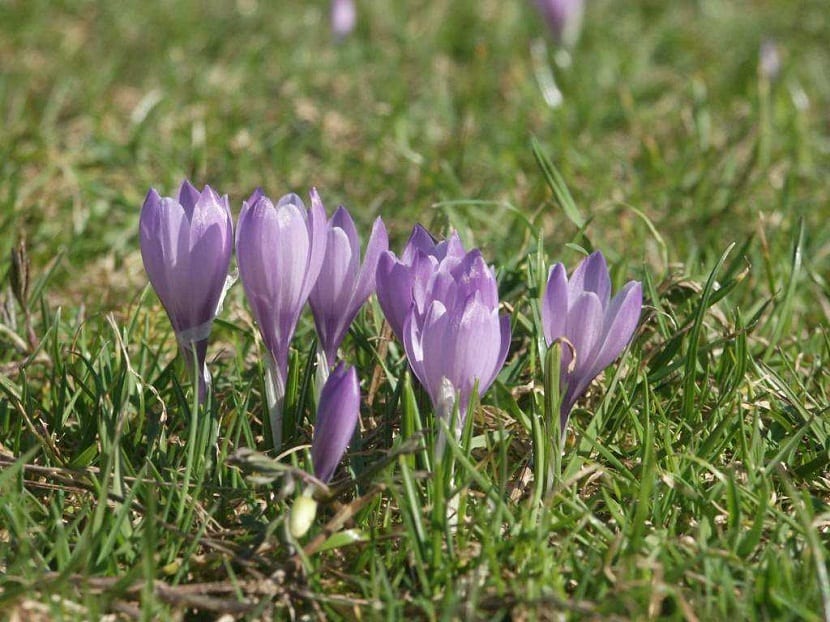
El crocus carpenterus It is a herbaceous plant belonging to the Iridáceas family. It can be seen practically throughout the Mediterranean and in some places in Asia Minor. Its name derives from the Greek "Kroke" which means filament, it is commonly known as Serrano Saffron. It is a fairly strong species that, due to its beautiful foliage and flowering, is widely used to decorate gardens and home interiors.
Features

El crocus carpenterus It is a perennial species with a rounded bulb with a diameter of approximately six cm, covered with fine and somewhat reticulated fibers, which turn flat at the base. Their linear, semi-cylindrical blades and with rolled edges, they can be seen during the time when the flower remains open or they can appear after flowering, the underside shows quite soft grooves.
Its flowers appear before the leaves and have a shape similar to bells, they are from one to three of a shade that can range from purple to purplish white, sometimes with darker ribs. They have a white upper bract, while their hypantial tube is also white with a yellow to orange stiletto and three multipartite twigs.
Crocus carpetanus plantation
Regarding the cultivation of saffron, it can be said that it is very practical and easy to do. The crocus carpenterus and as with most of the genus crocus, you should plant it in the ground during the fall. Now if you want to achieve better results then you must first fertilize the soil with an organic product, where possible it is slow release.
Like all saffron plant, Serrano saffron is sensitive to stagnation of water, so you should try to mix gravel preferably from the river or pumice stone with the soil. Place the specimens in full sun for much of the dayThis way you will achieve better results with the flowers. This plant tolerates low temperatures, to the point that some varieties of crocus bloom during seasonal frosts.
The humidity present in the soil and the air has a lot to do with its growth. For that same reason is that the plant becomes dormant during dry periods; while at the beginning of the rains, the bulbs return to produce roots. Remember, if you plant saffron in the open air, you will not need to water it frequently, the rain is enough to cover its requirements for the vital liquid.
Now and if you keep the bulbs in pots inside the house, try to water as long as the soil is dry. During the winter, water only once a week, it is the best way for the plant to comply with the vegetative rest. This plant has the characteristic of self-sowing and producing bulbs by itself. That is why it is important that you dig up the bulbs at least every four years for division.
If you want the propagation by seeds, you must prepare a sufficiently fertile seedbed that contains river sand and then sow the capsules during the autumn and for the development of the bulbs to be faster, make sure that the place selected to place the seedbed has a warm temperature, inside the house it may be enough.
Young specimens rarely flower before reaching two years of age. That is why it is recommended to do without the seed method and use the propagation method, dividing the main bulbs from the smaller secondary ones. It is a fairly easy procedure, which in no case leads to putting the mother's bulb at risk. It is important to carry it out in late flowering or early fall.
Diseases and parasites

Remember that the crocus carpenterus is a plant that prefers humid soils, for this reason it is important that treat your saffron plants with fungicidal agents to avoid the appearance of fungal diseases caused by excess humidity. Likewise, you should always be attentive to the appearance of insects and parasites such as mites and bedbugs; that attack and damage stems, leaves and flowers of the plant, even causing death.
To avoid the appearance of diseases, it is suggested to apply preventive pesticide treatments. In any case, the treatment should be applied before and during the flowering period. Regarding fungicides, these must be applied before the buds begin to open.